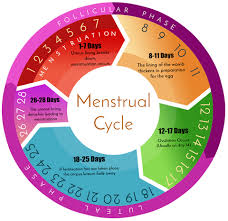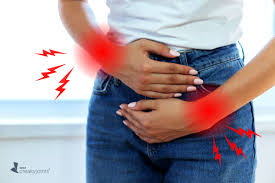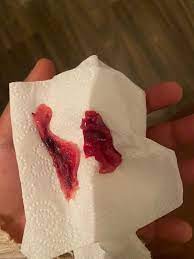The Science Behind the Menstrual Cycle: A Guide to Your Body’s Rhythms
The menstruation cycle is a natural process that occurs in the female body every month. It is essential for the reproductive system and fertility and is usually divided into four distinct phases: the menstrual phase, the follicular phase, the ovulation phase, and the luteal phase. During the menstrual phase, the uterus sheds its lining and a woman experiences menstrual bleeding. In the follicular phase, the ovaries produce hormones that stimulate the growth of the follicles that contain the eggs. During ovulation, the egg is released from the follicle and travels down the fallopian tube. Lastly, in the luteal phase, the uterine lining thickens in preparation for a potential pregnancy. Please keep reading for details on the following topics:
Premenstrual syndrome
Menarche
The menstruation cycle
Missed or irregular periods
Abnormal bleeding
How to manage bleeding and other symptoms of a menstruation cycle
When to seek urgent medical care

PREMENSTRUAL SYNDROME (PMS)

Symptoms that a woman feels just before getting a period that disrupts her daily life. Premenstrual syndrome (PMS) is a condition that affects many women of childbearing age. It is characterized by physical, emotional, and behavioral changes that occur in the days and weeks leading up to a woman’s menstruation cycle. Common PMS symptoms include bloating, mood swings, fatigue, irritability, crying spells, cravings for certain foods, and difficulty concentrating. While the exact cause of PMS is still unknown, it is believed to be related to changes in hormone levels. Fortunately, there are many treatment options available to help alleviate PMS symptoms.
CAUSES OF PMS
Premenstrual syndrome (PMS) is a common occurrence for many women, experienced in the days leading up to their period. PMS can cause a multitude of physical and emotional symptoms, ranging from mild to severe. Common causes of PMS can include:
Genetic predisposition
Lifestyle choices
Physical and psychological stressors
lifestyle adjustments can help alleviate the symptoms associated with PMS.
Hormonal changes occurring during the menstrual cycle
Lack of vitamin B6, calcium, or magnesium in the diet
Lack of exercise
Caffeine
SYMPTOMS OF PMS

PMS, or premenstrual syndrome, is a condition that affects many women prior to or during their menstruation cycle. It is important to recognize the signs of PMS, as there are treatments available to alleviate the symptoms. Mood-wise, PMS can cause irritability, anxiety, depression, and mood swings. The symptoms of PMS can vary greatly from woman to woman, but generally speaking they may include:
Bloating
Swollen and tender breasts
Lack of energy
Cramps and low back pain
Extreme emotions such as sadness, anger, irritability, or anxiety
Being less attentive
Having trouble focusing
Withdrawal from family and friends
Bloating, weight gain
Fatigue, lack of energy
Food cravings salt, caffeine
Sleeping too much or too little
Low sex drive
Mood and behavior symptoms
WAYS TO REDUCE THE SYMPTOMS OF PMS
Are you dealing with the symptoms of premenstrual syndrome (PMS)? It can be a real challenge to manage the physical and emotional symptoms associated with PMS. Fortunately, there are steps you can take to reduce the severity of PMS symptoms. Making dietary changes, exercising, and supplementing with vitamins and minerals can all help to reduce the symptoms of PMS. By taking proactive steps, you can make a huge difference in how you feel before, during, and after your period. Other ways to relieve the symptoms of PMS include the following:
Lifestyle adjustments
Having a balanced diet
Reducing the intake of salt, caffeine and alcohol
Pain medication
Getting regular exercise
Getting enough rest to relieve stress
Practicing relaxation techniques to reduce stress
Avoiding smoking
MENSTRUAL PAIN
Menstrual pain, also known as dysmenorrhea, is a common yet debilitating condition experienced by many women during their monthly cycle. It is typically characterized by cramping or aching in the lower abdomen, as well as back pain and nausea. While the exact causes of menstrual pain are unknown, it is believed to be related to the release of certain hormones during the menstruation cycle. Fortunately, there are a variety of treatments available to help reduce the intensity of menstrual pain.
HOW TO RELIEVE MENSTRUAL PAIN

Warm up the abdomen with a heating pad
Warm shower or bath
Elevate the legs whilst laying down
Lay on the side bringing the knees up to the chest to provide relief of abdominal pain
Use pads in place of tampons.
Exercise regularly
Use pain medication to relieve menstrual cramps and pain
MENARCHE
Menarche marks the beginning of a young girl’s transition into womanhood and is an important milestone in her life. It is the onset of the menstruation cycle, typically around the age of 12, and the start of the reproductive years. During this time, girls may experience a range of physical, mental and emotional changes, as well as a shift in social dynamics and responsibilities. It is important for girls to be educated on the signs and symptoms of menarche so they can track their cycles, take care of their own health and wellness, and understand their changing bodies.
Menarche is a woman’s first menstrual period which usually starts sometime between ages 9 and 15
The period typically lasts between 3 and 7 days monthly
Before a period starts one can
Feel anxious or emotional
Put on weight
Feel bloated
Feel pain to the abdomen
Feel tenderness to the breasts
Get acne to the face and body
Notice a spot of blood on her underwear
HANDY TIPS TO REMEMBER
One can seek advice from a trusted woman such as the mother, sister or doctor regarding the use of feminine products
Record the date of each period on a calendar for future reference
A woman can get pregnant once she starts having a period

THE MENSTRUATION CYCLE
The menstruation cycle is a natural process that occurs in the female body every month. The uterus forms a lining at the beginning of each month which is broken down and excreted as menstrual blood. It is a complex process that involves the release of hormones and the shedding of the uterine lining, which is followed by the production of a new lining in preparation for a potential pregnancy. The length of the cycle is calculated from the first say of bleeding to the next time of bleeding. During the menstruation cycle, a woman’s body prepares for ovulation and the potential for a fertilized egg. The cycle typically lasts for 28 days, but can vary from 24 to 35 days. During the cycle, a woman will experience changes in her mood, energy levels, and overall health, which can vary from cycle to cycle.
SYMPTOMS OF A MENSTRUAL PERIOD
Menstruation is a natural part of the female reproductive cycle. It usually occurs once a month and can last anywhere from a few days to a week. Symptoms of a menstrual period typically include:
Premenstrual symptoms
Anger
Bloating
Breast tenderness
Acne
Tiredness
Headache
Diarrhea or constipation
Nausea
Dizziness
Abdominal pain or cramping
Bleeding or spotting from the vagina
Some women may also experience heavy bleeding, irregular periods, and spotting in between periods
HOW TO MANAGE BLEEDING AND OTHER SYMPTOMS OF A MENSTRUAL PERIOD

Having a menstrual period can be an uncomfortable and disruptive experience, but it doesn’t have to be. There are many ways to manage the symptoms associated with a menstrual period, such as using over-the-counter medications, lifestyle changes, and mindfulness techniques. In this guide, we’ll cover the basics of managing the symptoms of a menstrual period, including how to choose the right medication, ways to reduce pain and cramps, and how to practice self-care during your period. With the right strategies and preparation, you can enjoy a more comfortable and manageable period.
Handy tips
Use pads to collect the blood
Change the pads frequently
Do not allow the pad to remain for more than 3 or 4 hours
Tampons can be inserted into the vagina to collect blood and should not remain for more then 8 hours
Menstrual inserted into the vagina to collect blood must be removed every 12 hours to be emptied
Exercising regularly
Eating a balanced diet
Avoid caffeine and alcohol
Warmth applied to the abdomen via heating pads or warm compresses can help alleviate the cramps
Medication for pain
Take note of the period dates
Take pain relieving medication to help reduce some symptoms
Elevate the legs to help with cramping
Lay on the side with the knees to the chest to help relieve back pressure as well as help to alleviate abdominal cramping
MISSED AND IRREGULAR PERIODS
For many women, having a regular menstruation cycle is an essential part of their health. However, sometimes women may experience missed or irregular periods, which can cause a variety of physical and emotional symptoms. We will now discuss the causes and helpful tips for avoiding this common issue.
CAUSES OF MISSED OR IRREGULAR PERIODS
WAYS TO AVOID MISSED OR IRRREGULAR PERIODS
Avoid weight loss diets that can cause rapid weight loss by restricting calories
Use the contraceptive pills consistently
Practice relaxation exercises to reduce stress.
Eat a healthy, balanced diet
ABNORMAL BLEEDING

Abnormal bleeding in women is a common issue that can have a variety of causes. It can range from minor to severe and can often be a sign of a more serious underlying condition. It is important to understand the types of abnormal bleeding, their causes, and the treatment options available to you. We will now provide an overview of abnormal bleeding in women and discuss the various factors that can be contributing to the issue.
CAUSES OF ABNORMAL BLEEDING
Bleeding or spotting before 12 weeks of pregnancy- ectopic pregnancy or miscarriage
Heavy bleeding after 12 weeks of pregnancy- placenta previa, miscarriage/ abortion
Hormone imbalance- Polycystic ovary syndrome (PCOS)
A foreign object
A health condition
Few weeks after delivery (postpartum) -retained products of conception, uterine not well contracted (uterine atony)
40 years or older- perimenopause
Stress
WHEN TO SEEK URGENT MEDICAL CARE
It is important to know when to seek urgent medical care, as delaying appropriate treatment can lead to further health complications. If you experience any of the following symptoms, you should seek medical help immediately. If you have any doubts about whether you should seek medical care, it is always better to err on the side of caution and consult with your doctor.
The menstrual flow is very heavy and lasts over 7 days
One is passing large clots
The blood lost is soaking through within less than hour for 2 or more hours.
Pain unrelated to the menstruation cycle which lasts over one day
Teenager who has not had a period by age 15
Abnormal bleeding returns
If the bleeding continues or worsens
Feeling weak
Disclaimer: The information provided in this content is for general informational purposes only. It is not intended as medical or healthcare advice, diagnosis, or treatment. Always seek the advice of a qualified healthcare professional with any questions you may have regarding a medical condition or healthcare decisions. menstruation cycle menstruation cycle menstruation cycle menstruation cycle

